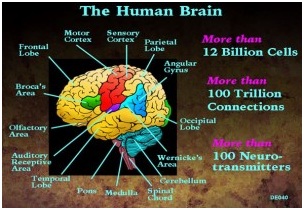In 2013 IBM surprised the world of computing by introducing a prototype of a new kind of computer, which uses an artificial bloodstream to fuel its inner workings in the same way the human brain operates. Casual observers, who are used to all facets of life becoming more automated and mechanised, may be confused by IBMs assertion that to progress computers should become more like our brains. However considering the basic scientific principles behind the innovative system reveals the method in the apparent madness.
Efficiency, overheating and the human brain
An article posted on CNNs Money section highlights the finite potential of conventional computer technology. In the case of supercomputers, their sheer size is partly due to the hazardous practice of having small computer chips placed in close proximity when generating immense heat. However, the transfer of heat and energy by a charged stream of electric blood allows for more efficient, cooler operation. Copying the biological functions of our brains enables computer chips to be stacked three-dimensionally, allowing for a more compact build.
According to Moores Law silicon chips have doubled in power roughly every 24 months since Gordon Moore made his now-infamous prediction in 1965. However chips, which are commonly placed two-dimensionally with ample spacing in both consumer hardware and supercomputers, cannot shrink much further without providing substandard power levels or overheating. IBMs plans are centred around controlling energy efficiency and overheating in the next generation of computers. Like every complex piece of equipment the individual parts play a crucial role, take a speaker, the sound wouldnt come out if the parts were not all intertwined, http://sigatransformers.co.uk/custom-transformers are Toroidal Transformer Manufacturers they make a part (a toroidal) that helps with the clarity of a speaker.
Allometric scaling
The natural science research resourcenature.comdiscusses the concept of allometry, one of the driving principles behind the inner workings of IBMs prototype. In biology the law of allometric scaling means metabolic power is greater in animals with larger body mass. One of the most striking examples is that of elephants and mice. Hundreds of thousands of mice are needed to produce the same weight as just one elephant, with the larger animals able to achieve greater feats of strength while consuming less energy than the multitude of mice in the process. In a similar fashion the proposed system of computer chips stacked in three dimensions, with processors and memory storage units knitted together into one system, become more than a sum of their parts and can perform greater tasks with increased efficiency.
Electronic blood in business
Many modern businesses are intrinsically linked to their computer infrastructure. In the particular case of those based in information technology, such as website hosting and Software testing Services, organisations see their output plateauing when they reach the limits of their current hardware capabilities. The hardware setup of any single organisation, as well as that of national and international networks such as large-scale servers, can only be continually improved by the implementation of new ideas.
Computing innovations such as IBMs electronic blood routinely take decades to reach the marketplace. Even sweeping improvements such as broadband internet and multiple-core processors begin in the hands of governments and multinational businesses. Once practical applications and costing solutions have been implemented technology can be rolled out to the wider community, including to small businesses and consumers.



